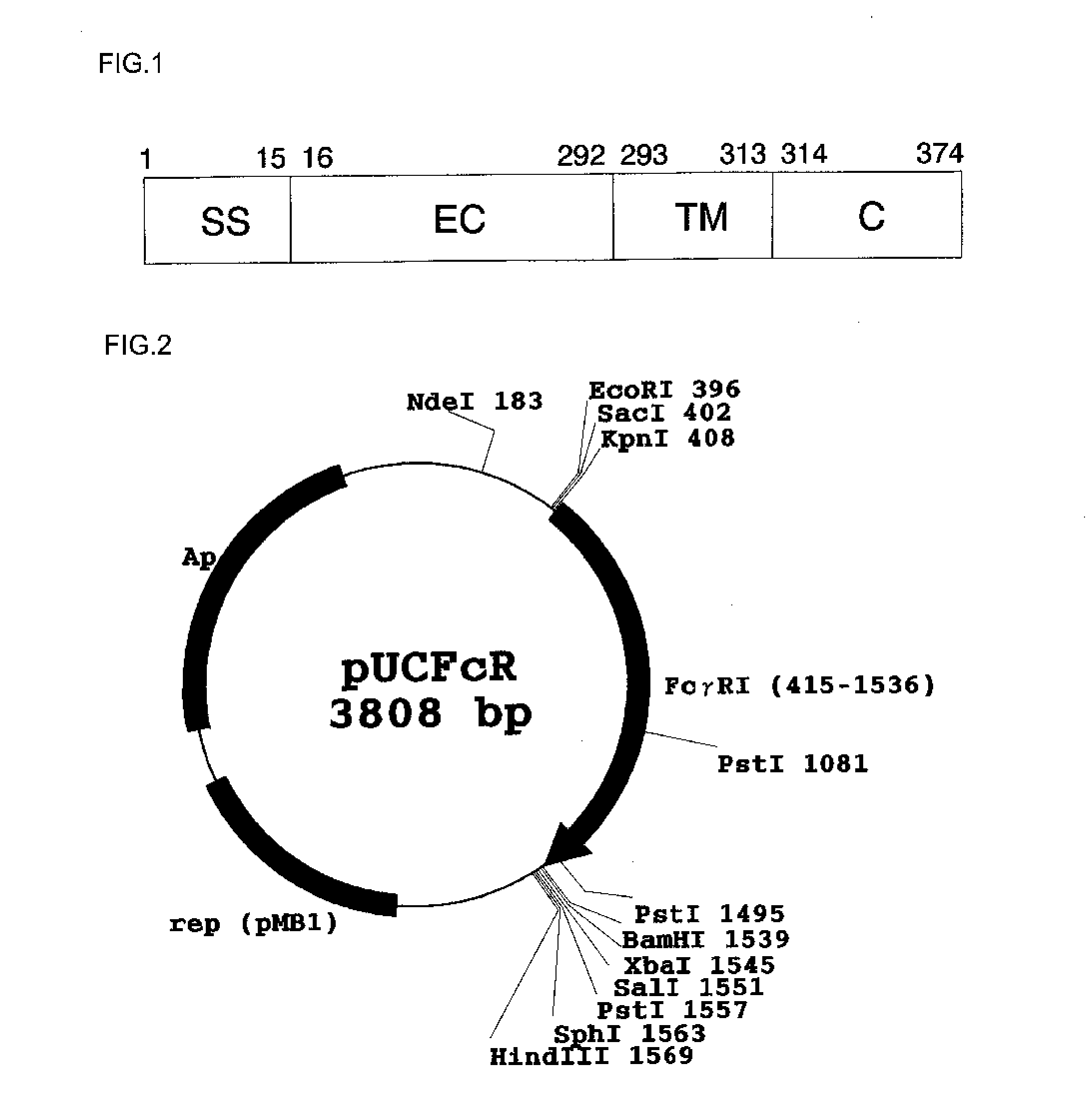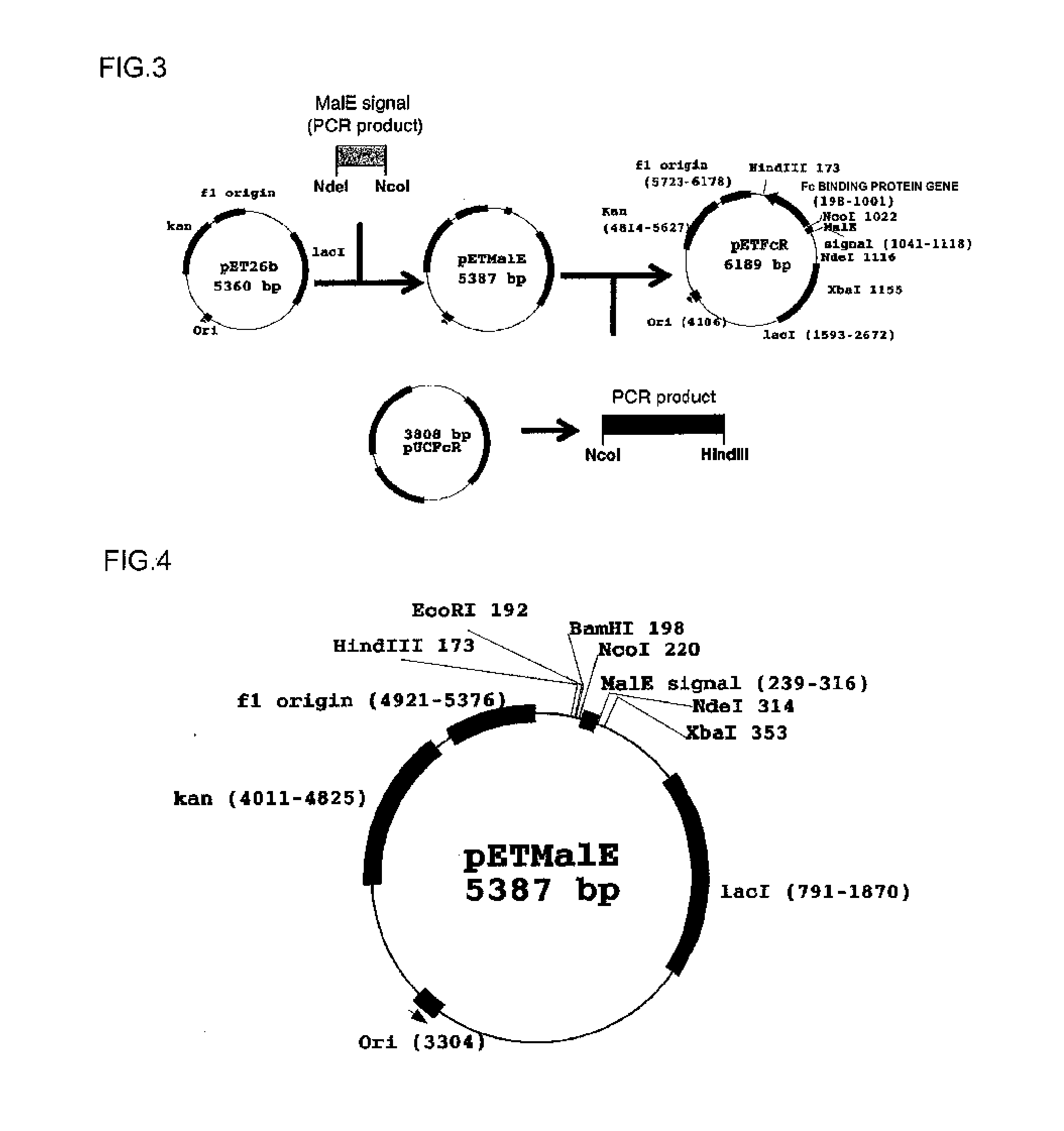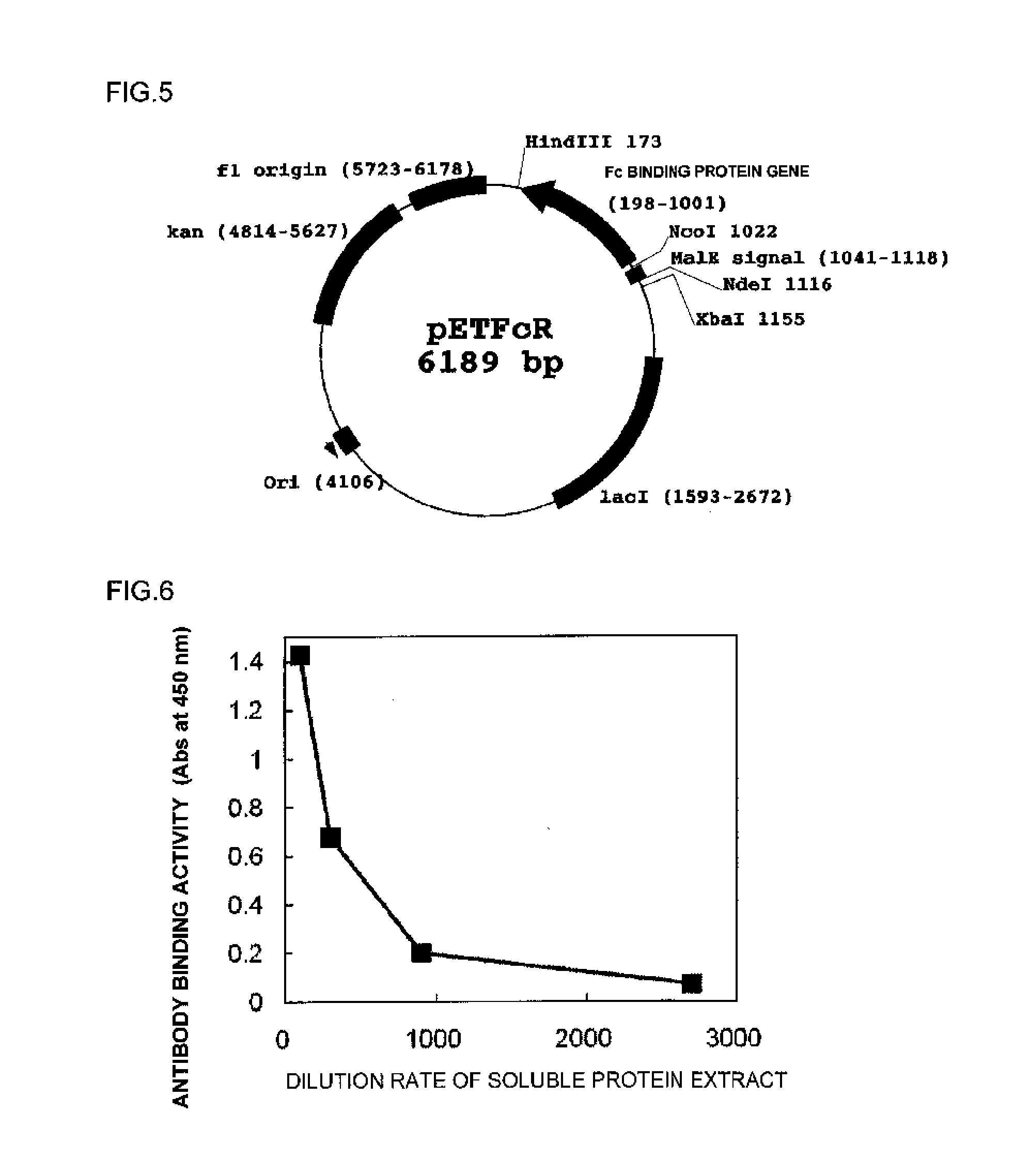Fc binding protein and method for manufacturing same
a technology of binding protein and manufacturing method, which is applied in the field of fc binding protein, can solve the problems that no example has been used industrially, and achieve the effects of increasing protein productivity, increasing stability to heat, acid, and/or alkali, and stably purifying
- Summary
- Abstract
- Description
- Claims
- Application Information
AI Technical Summary
Benefits of technology
Problems solved by technology
Method used
Image
Examples
example 1
Cloning of Polynucleotide Encoding Human Fc Receptor FcγRI
[0095](1) An amino acid sequence of a human Fc receptor FcγRI described in SEQ ID NO: 1 in an extracellular region, a cell transmembrane region, and an intracellular region (region at positions 16 to 374) was converted using an E. coli codon into a nucleotide sequence.
[0096](2) Based on the nucleotide sequence, 52 types of oligonucleotides were synthesized to produce a polynucleotide encoding the human FcγRI. The synthesized oligonucleotides are shown in SEQ ID NOs: 10 to 61.
[0097](3) Two-step PCR described below was carried out to produce a full-length polynucleotide encoding the human FcγRI from the oligonucleotide synthesized in (2).
[0098](3-1) A first PCR was carried out by heating for 5 minutes at 94° C., carrying out 25 cycles consisting of 30 seconds at 94° C. in the first step, 30 seconds at 62° C. in the second step, and 1 minute at 72° C. in the third step, and finally heating for 7 minutes at 72° C. using a reactio...
example 2
Production of Expression Vector of Fc Binding Protein
[0105]A system using MalE signal peptide (amino acid sequence; MKIKTGARILALSALTTMMFSASALA, SEQ ID NO: 182) was constructed to express an Fc binding protein in E. coli. The outline of a production process is shown in FIG. 3.
[0106](1) Oligonucleotides shown below were ligated by the PCR method in order to produce a polynucleotide encoding the MalE signal peptide.
[0107]An oligonucleotide having a sequence shown in SEQ ID NO: 62 (5′-TATA[CATATG]AAAATAAAAACAGGTGCACGCATCC-3′; bases in square brackets represent a restriction enzyme NdeI site)
[0108]An oligonucleotide having a sequence shown in SEQ ID NO: 63 (5′-GCATTAACGACGATGATGTTTTCCGCCTCGGCTCTCGCC-3′)
[0109]An oligonucleotide having a sequence shown in SEQ ID NO: 64 (5′-ATCGTCGTTAATGCGGATAATGCGAGGATGCGTGCACCTG-3′)
[0110]An oligonucleotide having a sequence shown in SEQ ID NO: 65 (5′-TTGTC[CCATGG]CTTCTTCGATTTTGGCGAGAGCCG-3′; bases in square brackets represent a restriction enzyme NcoI sit...
example 3
Analysis of Nucleotide Sequence
[0121]The sequences of the polynucleotides inserted in pUCFcR (FIG. 2) produced in Example 1 and pETFcR (FIG. 5) produced in Example 2 were subjected to a cycle sequencing reaction using a Big Dye Terminator Cycle Sequencing FS read Reaction kit (PE Applied Biosystems) on the basis of a chain termination method, and analyzed using a fully automated DNA sequencer ABI Prism 3700 DNA analyzer (PE Applied Biosystems). Further, an oligonucleotide having a sequence shown in SEQ ID NO: 68 (5′-TAATACGACTCACTATAGGG-3′) and an oligonucleotide having a sequence shown in SEQ ID NO: 69 (5′-TATGCTAGTTATTGCTCAG-3′) were used as primers for sequencing.
[0122]From results of the analysis, the sequences of the polynucleotides inserted in pUCFcR and pETFcR were confirmed to be as designed. The sequence of the polynucleotide inserted in pUCFcR is shown in SEQ ID NO: 70, and an amino acid sequence of an Fc binding protein translated from the polynucleotide is shown in SEQ I...
PUM
| Property | Measurement | Unit |
|---|---|---|
| Acidity | aaaaa | aaaaa |
| Temperature | aaaaa | aaaaa |
| Temperature | aaaaa | aaaaa |
Abstract
Description
Claims
Application Information
 Login to View More
Login to View More - R&D
- Intellectual Property
- Life Sciences
- Materials
- Tech Scout
- Unparalleled Data Quality
- Higher Quality Content
- 60% Fewer Hallucinations
Browse by: Latest US Patents, China's latest patents, Technical Efficacy Thesaurus, Application Domain, Technology Topic, Popular Technical Reports.
© 2025 PatSnap. All rights reserved.Legal|Privacy policy|Modern Slavery Act Transparency Statement|Sitemap|About US| Contact US: help@patsnap.com



